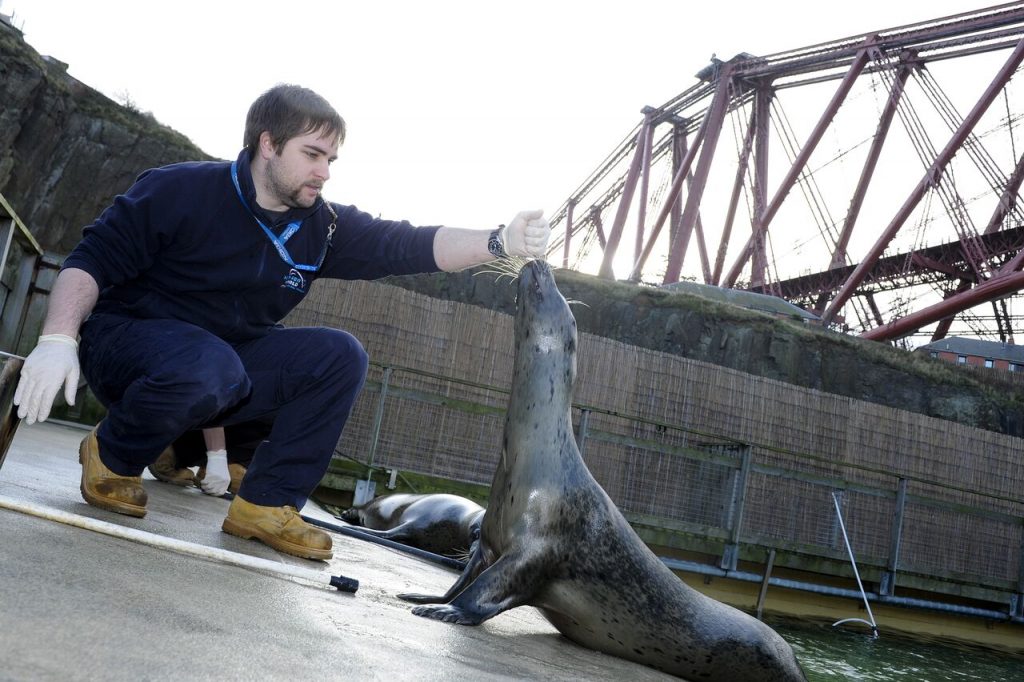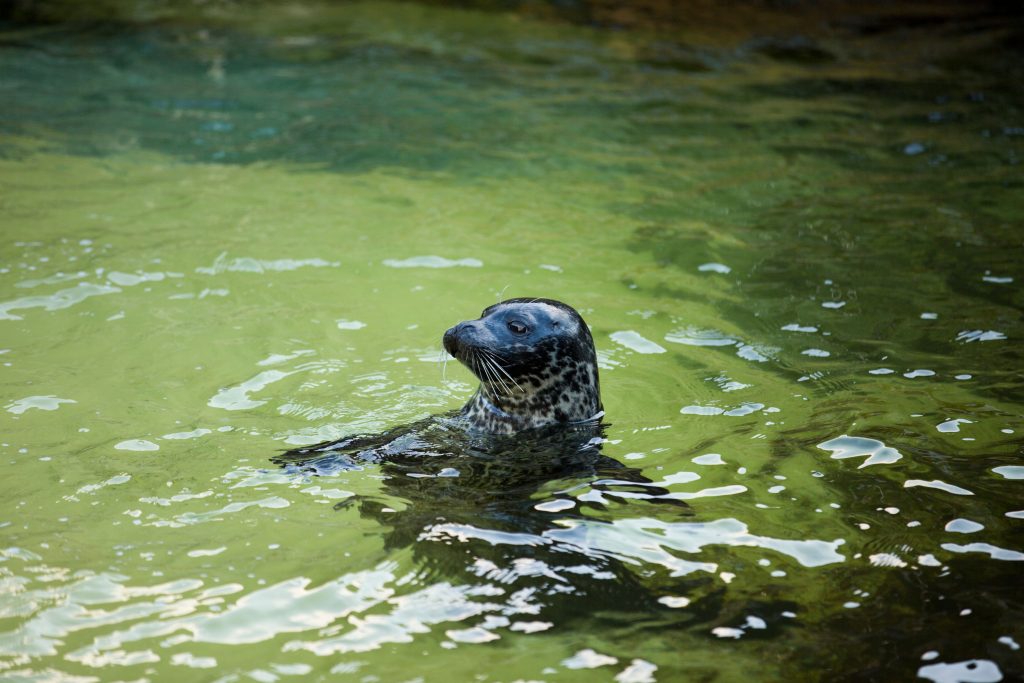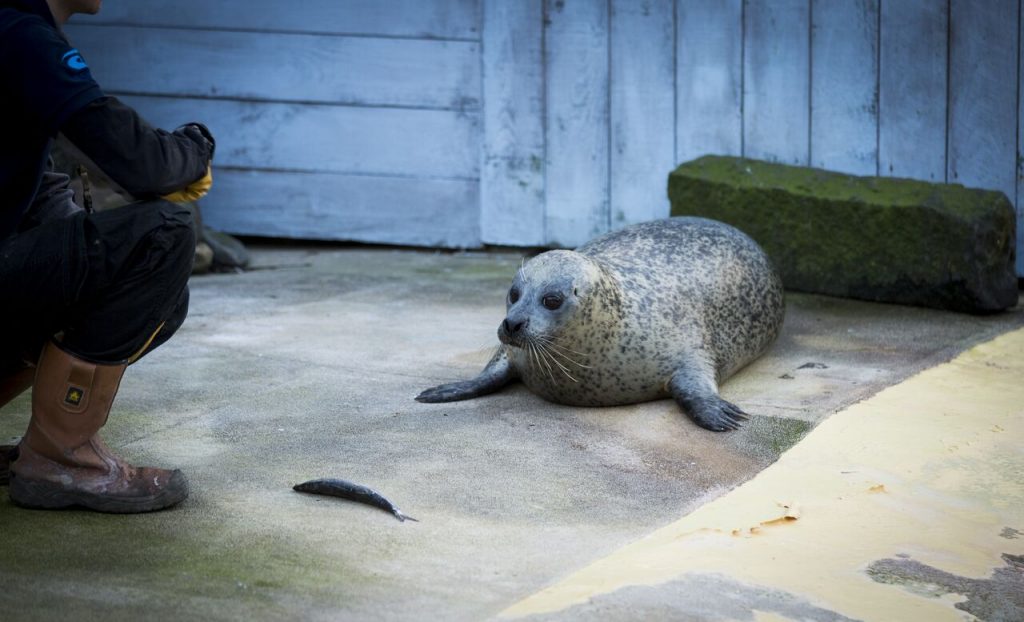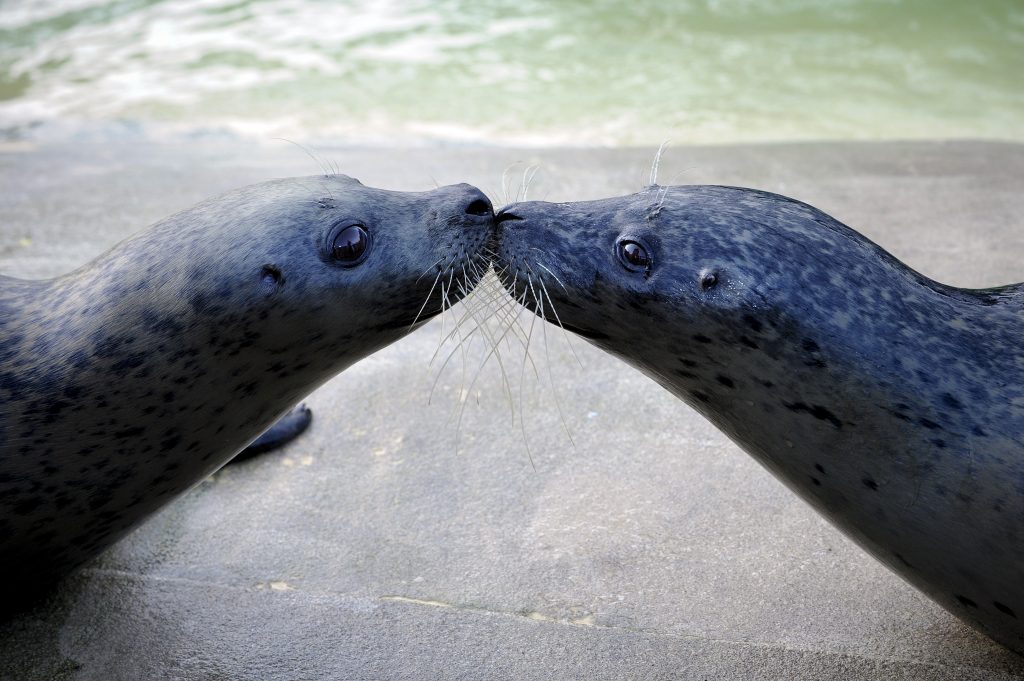With their whiskered snouts and playful, inquisitive personalities, it’s easy to see why seals are often referred to as ‘the puppies of the ocean’. One of the most charming creatures found in our seas, these cute guys come in all different shapes and sizes, with many different species to be found across the globe.
Looking to know more about just how amazing seals are? You’re in the right place – let’s dive in and take a closer look at where seals come from, their diet and behaviour, along with a chance to meet our own fin-footed friends right here at Deep Sea World.
- Where do seals originate from?
- Where do seals live?
- What do seals like to eat?
- How do seals behave?
- Meet our seals
Where do seals originate from?
Seals are part of the order of marine mammals called pinnipeds, which also includes fur seals, sea lions (part of the Otariidae family) and walruses (part of the Odobenidae family).
The earless or true seal, also known as the common seal, are themselves part of the Phocidae family, and there are around 33 species of seals, and all are thought to have evolved from land-based, bear or otter-like, ancestors!
Where do seals live?
Common seals can be found around the coastal water of both the Atlantic and Pacific Oceans. Despite their name, they’re actually rarer than the grey seals that often call the waters of the UK their home. You can tell the difference between the two from the common seals’ smaller size and shorter head, as well as their V-shaped nostrils compared to grey seals.
The majority of seals live in Arctic and Antarctic waters. While the freezing temperatures aren’t suitable for us, they’re perfect for seals who’s fur and layer of fat-like blubber have adapted to such cold conditions over time.
What do seals like to eat?
Although we tend to think of seals as being harmless, the common variety are very skilled at preying on their food! By storing oxygen in their muscles and blood instead of their lungs, seals are able to dive for between 30 minutes and two hours. This lets them look for all their favourite food, a real seafood platter of things like oily fish, squid and molluscs! Their whiskers are also super sensitive so they can detect the tiniest of movements in the water. When other fish swim by, they create vibrations in the water that a seal’s whiskers then pick up. That means they can also detect predators, using this built-in radar to make a quick getaway!

Even though they’re skilled at hunting, seals need to watch out too, as they can easily become prey for larger animals. Killer whales are especially fearsome, hiding deep in places where it’s too dark for many other creatures to see. Once they’ve spotted their seal meal, they shoot upwards, hitting seals living on the surface of the water with a force so big it seriously wounds their target.
To make sure they don’t become food themselves, seals swim on their backs with their eyes facing downwards so they can check for incoming whales. This also lets them look for other tasty fish and crustaceans when they’re feeling peckish.
How do seals behave?
When they aren’t hunting or on the lookout for predators, seals try to rest so they have lots of energy. They’re big fans of napping, usually getting some shut-eye on rocky shores in big groups, or they rest in the water. They sleep in the water by submerging their bodies under the surface, but they keep their heads in the air so they can breathe, a position that’s known as bottling. There are even some species that sleep completely submerged, close to the surface of the water, but they can close their nostrils to make sure they don’t drown.
And while having a snooze in the water might sound chilly, the thick layer of blubber under their skin we mentioned before keeps them warm in the cold ocean.

Some types of seal are very sociable and love to be around their pals, but others prefer to go it alone. True seals are usually found in smaller groups, but eared seals are much more sociable – when they’re on land, they can gather in groups of up to 1,500 seals! These groups, called herds, are so big that seals just pile on top of each other like large, blubbery pillows!
Seals communicate with each other through soft calls. Mother and baby seals can recognise each other through these calls so much that scientists found that even mum and baby seals that had been apart for as long as four years still knew who each other was.
Meet our seals
At Deep Sea World, our specialist trainers look after our resident seals – Laura, Benji and Cody – every day, making sure they have plenty of exercise, teaching them new tricks, feeding them their favourite foods and making sure they’re as healthy and happy as possible. Plus, with our pool which is over 3m deep, they’ve got lots of room to swim about and stretch their muscles.
Laura
At 29 years old, Laura is the oldest of our seals. You can tell her apart from the boys, as her fur is a lot lighter. Since she’s getting on a little bit, she loves nothing more than lazing around on the beach for a spot of sunbathing during the warmer months.

Despite her advanced age, Laura’s still as smart and wise as ever. Even if she doesn’t do her daily exercises, she knows she’ll still be treated to a bucket of fish! It’s worth stating that as common seals get older, their eyesight becomes weaker and weaker, so we have to feed Laura a little bit differently from the boys. While Cody and Benji are able to dive and search for their fish in the water, Laura’s food needs to be a lot closer when it’s mealtime!
Cody and Benji
Two seal brothers, Cody and Benji are a lot more active, preferring to show off while they do their exercises. At only 6 and 7 years old, these youngsters are a lot smaller than Laura right now, though they’ll eventually outgrow her since male seals tend to be larger than their female counterparts.

These two love spending time in the water, swimming through their hoop and showing off by staying underwater for just under 30 minutes! Along with keeping their bodies active, our aquarists like to keep their minds sharp with exercises that they perform daily. Ranging from waving to our visitors to leaping out of the water to hit a suspended ball, they’ve built up quite the range of skills over time.
Cody is the more troublesome of the two, and will attempt to dive headfirst into the feeding bucket when our aquarists aren’t looking, which always gets a good laugh from our visitors. Benji, on the other hand, is far better behaved, preferring to stay in the water and wait for his food to be thrown so he can catch it in his mouth!
Looking to see these amazing creatures for yourself? Join us for a day among some of the world’s most exciting marine life. For more information or to book your tickets, visit the Deep Sea World homepage or give us a call on 01383 411 880.
